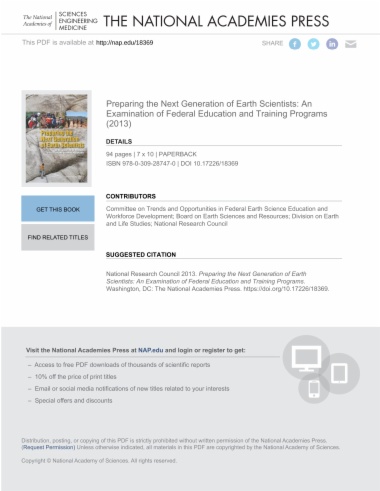

Earth science, which in this context does not include oceanic, atmospheric, and space sciences, is vital to the wellbeing of the United States and many of its issues, such as water resources, are expected to grow in importance. An earth science workforce will be needed to deal with this issues and it\'s important that this workforce draw on the talents of all citizens. Thus, federal education programs can be implemented to help attract and retain students on an earth science pathway; however, tight funding means agencies need to invest in programs that actually work.
As a result, the U.S. Geological Survey (USGS) Office of Science Quality and Integrity asked the National Research Council (NRC) to establish a committee to carry out a study, organized around a workshop, to address several tasks including: examining recent earth science education programs with a research or training component, both formal and informal, in these federal agencies; indentifying criteria and the results of previous federal program evaluations, and summarizing the knowledge and skills identified in recent NRC workforce reports that are needed by earth scientists in their careers.
Preparing the Next Generation of Earth Scientists: An Examination of Federal Education and Training Programs presents the committee\'s finding. The investigation was completed through information provided by federal agency managers and published articles and reports. A 2-day workshop was also held to examine federal earth science education programs and efforts to leverage resources. The report includes the workshop agenda, a glossary of abbreviated terms, and more.